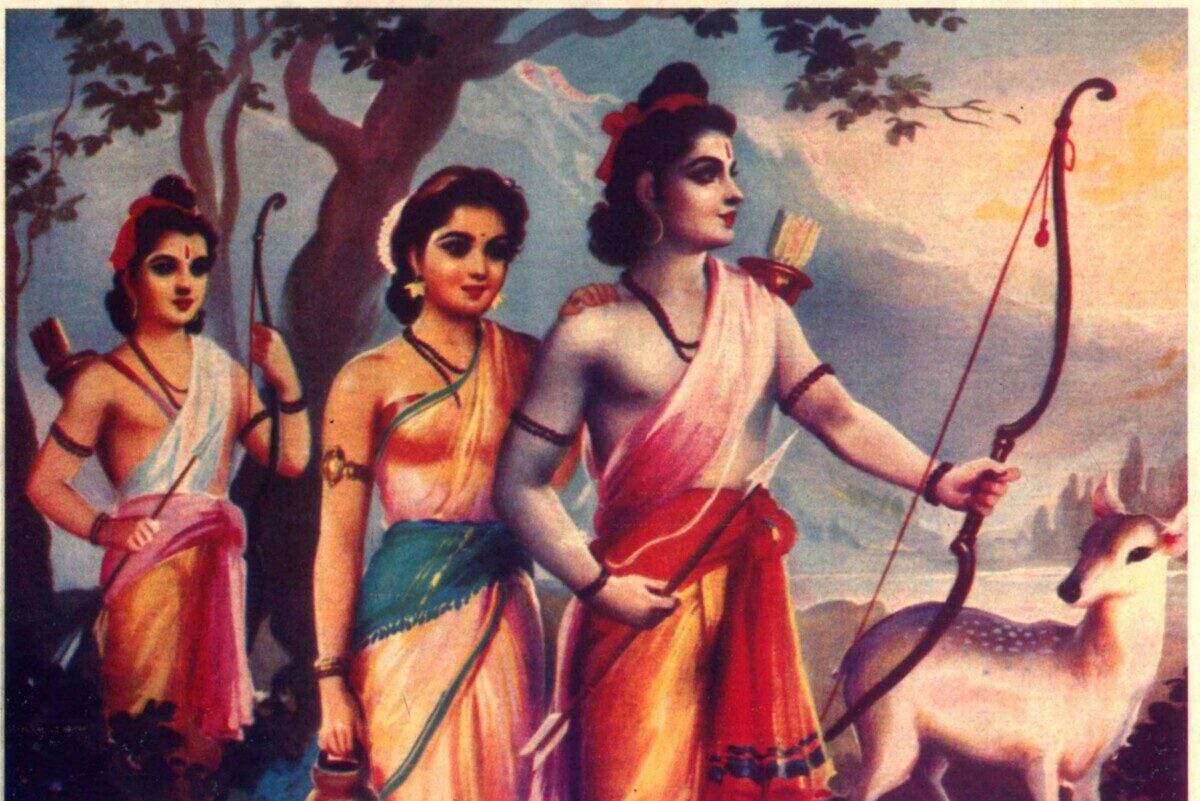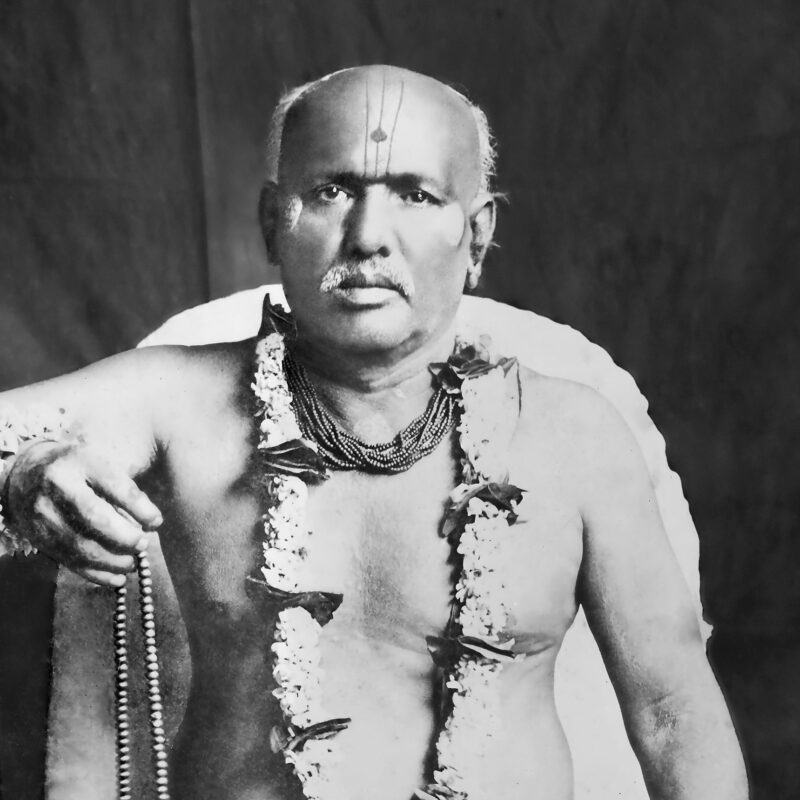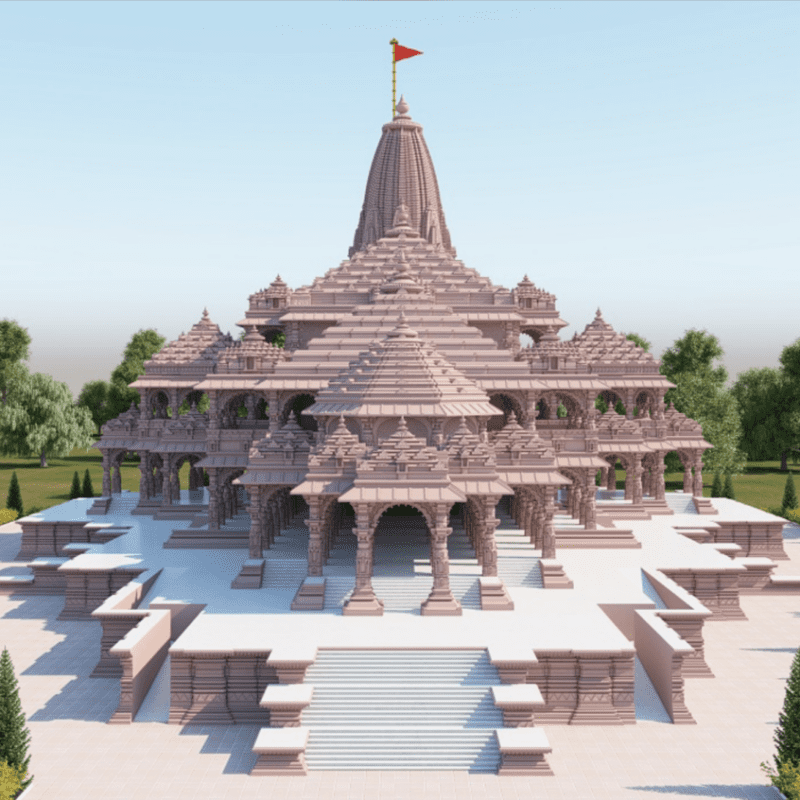
1) He is an embodiment of dharma, or righteousness
The world is a volatile place, prone to be thrown out of balance when those consumed by lust and greed accumulate too much power. Because of this, Vishnu, known as the god of preservation, is said to descend in various avatar forms, each with a unique role in helping to repair universal stability whenever it is needed.
The more extreme the manifestation of lust, greed, and power is, the greater the manifestation of love and goodness is required, and according to ancient texts, such a requirement came during the reign of Ravana, who was a tyrannical king of unfathomable proportions.
A slave to his senses, he was completely consumed by his desire to rule and control all, causing chaos and pain throughout the universe without anyone who could check him. To thus save the suffering and restore balance to the universe, Vishnu incarnated as Ram, a divine king who not only exceeded him in battle, but emerged as his spiritual counterpart, revealing that true strength comes not from an insatiable thirst for power, but from discipline aimed towards the good of all. As such, Ram is known as the perfect embodiment of dharma, or righteousness, whose timeless example shows what it means to selflessly perform one’s sacred duties, even at the cost of personal desires.
2) He is a symbol of devotion
Exiled to the forest after his step-mother forced her husband to banish him so her own son could inherit Ayodhya’s throne instead, Ram goes through an extraordinary series of trials and tribulations, each of which seems insurmountable, yet becomes possible through the incalculable power of love and friendship.
Famously depicted in Hinduism’s popular epic The Ramayana, the greatest of these challenges comes when Ravana, overcome by Sita’s (Ram’s wife) beauty, steals her away to his kingdom in Lanka. Scorched by the fire of grief and separation, Ram, assisted by his loyal brother Lakshman, embarks on a quest to find the love of his life, forging an alliance with the Vanaras, a powerful race of forest-dwellers who become won over by his extraordinary nobility, honor, and virtuous character. Especially captivated by Ram’s compassion, humility, and unconditional commitment to others, Hanuman, the strongest of them, evolves into his greatest devotee, performing one miraculous feat after the next in service to him and Sita.
Inspired by such feats, all drawn to Ram’s cause ride the wave of Hanuman’s dedication and sincerity to immeasurable heights, illustrating that at the core of dharma resides the inexorable pillar of devotion. Reaching its peak at the inconceivable love Ram and Sita share with each other, this wave continues to be ridden by followers all over the world, empowering them to serve the divine couple and their devotees in ways beyond what could have possibly been imagined.
3) He is an exemplar of spiritual pluralism
Though Ram is an object of immense devotion, worshiped by countless adherents over thousands of years, he is by no means the kind to monopolize the adulation. As devotion begets devotion, the reverence he receives is of the utmost ardor only because he is the greatest champion of it to all, including that of other gods, who have their own loyal followings.
When, for example, he was engaged in what turned out to be a long and arduous battle with Ravana, Ram, during a break in the fight, recited a prayer known as Aditya Hridayam, appealing to Surya, the Sun, for help. Experiencing an immediate change in his mind and body, which became infused with the deity’s radiant power, Ram took up his bow and re-engaged the enemy with renewed enthusiasm, bringing a conclusive end to Ravana’s reign of terror.
And after, when he hoped to cleanse himself of the karmic debt generally attached to the violence of war and death, Ram performed a formal worship of Shiva in Rameshvara, establishing two lingas in the god of transformation’s honor. Today, those lingas continue to be worshiped at that site as the main attraction of the renowned Rameshvara Temple, where pilgrims from all over bask in Shiva’s limitless compassion, highlighted and enhanced by the exceptional model of Ram’s transcendent devotion.
4) His story marks the victory of good over evil
Ram’s exile, while tragic as it happened, was actually a blessing in disguise, for it led to his killing of Ravana, who had become a scourge on not just the earth, but the universe. Gone, however, from a kingdom where he was widely beloved, the divine light of his presence was sorely missed, casting a shadow of sorrow on all he left behind.
Yearning for his return from the moment of his departure, Ayodhya’s citizens brimmed with anticipation when they learned, after 14 long years, their king and queen were finally coming home — and after defeating Ravana! Thus charged with an exultant joy that knew no bounds, they swiftly prepared for their arrival, exuberantly lighting lamps throughout the city in their honor.
A breathtaking display of their adoration, amplified by the many years of bereaved separation, the lighting of lamps is a tradition that continues to this day, particularly by those who wish to tap into the same mood of devotion. Known as Diwali, or “a row of lights,” this tradition shines as one of Hinduism’s most popular holidays, reminding all who participate that light dispels darkness, knowledge prevails over ignorance, and true goodness always outlasts the misguided onslaughts of evil.
5) His birth is celebrated on Ram Navami
Generally speaking, Ram’s earthly appearance, which falls on the ninth day of the Hindu lunar month of Chaitra (March-April), is like a lot of India’s other major celebrations, with devotees finding different ways to engage as much of their being in meditation on his life and qualities.
This, among other things, includes fasting, singing spiritual songs, enacting devotional dramas, performing puja (worship) to his deity, cooking a feast in his honor, and listening to narrations of his various pastimes. And, of course, in places like Ayodhya, Rameshvara, and Bhadrachalam, where a number of these pastimes are believed to have taken place, the celebrations happen in a major way, often involving chariot processions and elaborate charitable endeavors.
Being, however, that The Ramayana has been such a timeless beacon of inspiration, what makes festivals like Ram Navami especially unique is its global appeal and participation. Indo-Caribbean communities especially, like those in Guyana and Trinidad and Tobago, where Ram’s story provided the courage, strength, resilience, and fortitude needed to keep their culture alive, are an extraordinary example.
Though, as indentured servants struggling to survive, they were severely exploited and pressured to give up their faith, the epic, along with the observances connected to it, played an essential role in helping them maintain their Hindu identity and traditions. As such traditions have grown, expanding to numerous countries by those who practice them, Ram has become more than just a deity of Hinduism, but a universal hero of love, integrity, and spiritual valor.
If you enjoyed this piece, then you may also be interested in reading “5 things to know about Hanuman”








































